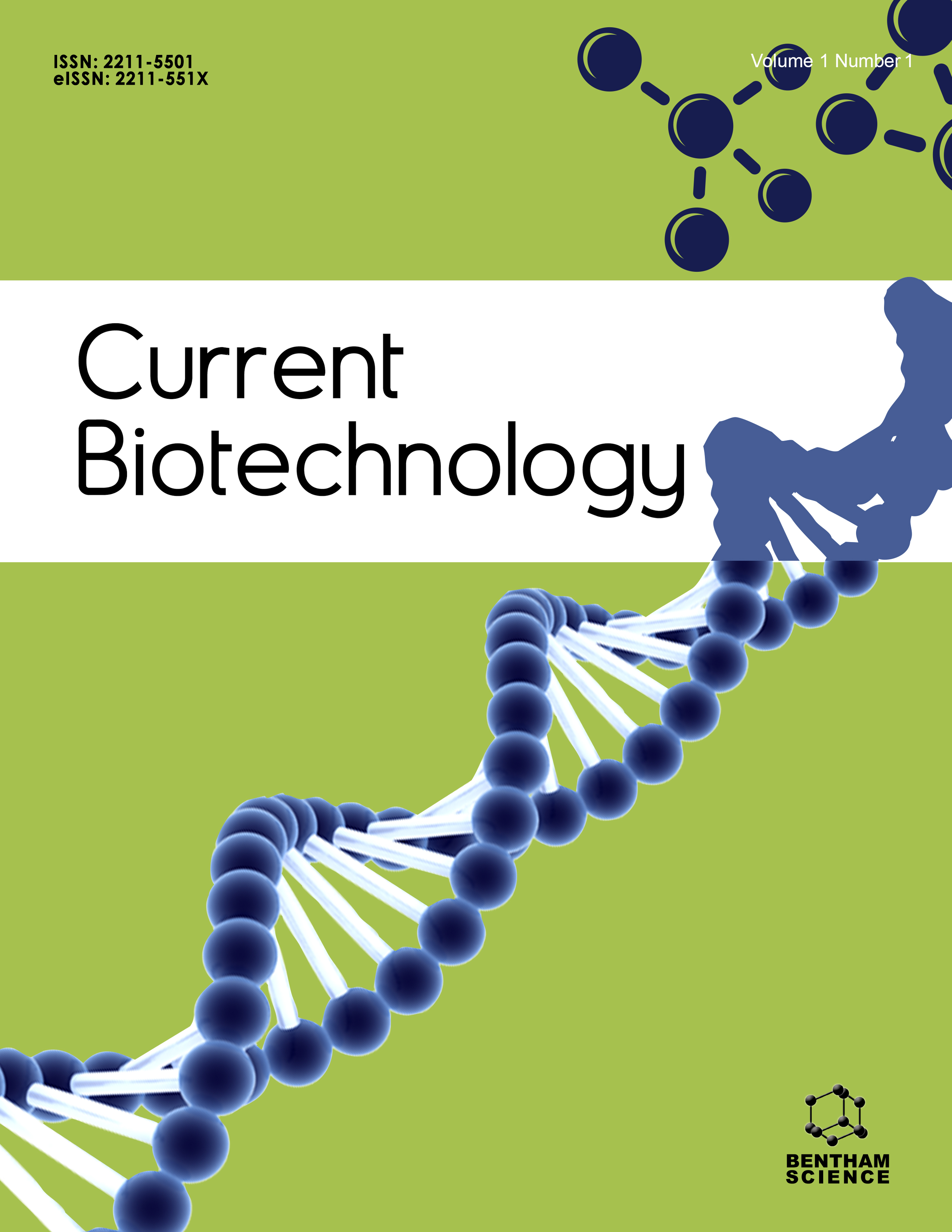- Home
- A-Z Publications
- Current Biotechnology
- Previous Issues
- Volume 1, Issue 4, 2012
Current Biotechnology - Volume 1, Issue 4, 2012
Volume 1, Issue 4, 2012
-
-
Biotechnological Approaches for Control of Listeria monocytogenes in Foods
More LessAuthors: Olivia McAuliffe and Kieran N. JordanListeria monocytogenes is a foodborne pathogen that can cause listeriosis, an invasive infection in humans with a fatality rate of 20-30%. Listeriosis is a global public health concern, with an increasing incidence in Europe, especially among elderly persons. Cases of listeriosis are, for the most part, associated with ‘ready-to-eat’ foods, including deli meats, smoked fish, unpasteurised milk, soft cheeses, fresh-cut fruit and vegeta Read More
-
-
-
High Resolution Episcopic Microscopy – Current Applications
More LessAuthors: Stefan H. Geyer, Timothy J. Mohun, Lars P. Kamolz and Wolfgang J. WeningerHigh-resolution episcopic microscopy (HREM) is a recently developed technique, which permits the rapid generation of digital volume data from biological material. Typical HREM data have a resolution of approximately 2×2×2 µm3 and are comprised of a stack of inherently aligned images, which resemble the quality of digital images of histological sections. This study aims at recapitulating technical details of the HREM meth Read More
-
-
-
Microbial Syntheses of Metallic Sulfide Nanoparticles: An Overview
More LessAuthors: Nelson Duran and Amedea B. SeabraThis review presents the advantages of biogenic synthesis of metallic sulfide nanoparticles, compared to chemical synthesis processes. The impact of biogenically synthesized sulfide nanoparticles is discussed from ecological point of view. This review also discusses the morphological characteristics and mechanistic aspects of sulfide nanoparticles synthesized by the biogenic process. By revising recent publications, it is Read More
-
-
-
The Forward Path for Biopharmaceuticals and Biosimilars: Emerging Options in the Selection of Host Cell Systems
More LessAuthors: Krista Wager and Graham JonesBiopharmaceuticals and their generic counterparts referred to as biosimilars represent the fastest growing segment of the pharmaceutical market. In contrast to conventional small molecule therapeutics, myriad additional considerations need to be addressed during the regulatory approval process. Key issues surrounding these protein based agents stem from their biosynthesis from living cells, and include post translational Read More
-
-
-
The Reuse of Sewage Sludge: Current Problems and Future Trends
More LessIn all likelihood, the management of solid and liquid wastes will become one of the most important environmental problems of the 21st Century. A major priority is thus to develop new strategies for the reduction, reuse, recycling, and valorization of this waste in order to reduce its negative impact on the environment. European Union countries are currently required to treat urban wastewater in all the cities, and consequentl Read More
-
-
-
Cyanide Detoxifying Enzyme: Rhodanese
More LessAuthors: Mayank Chaudhary and Reena GuptaRhodanese is an ubiquitous enzyme active in all living organisms from bacteria to man. It is multifunctional enzyme but plays central role in cyanide detoxification. This enzyme is also widely distributed in plants. It functions through double displacement (ping pong) mechanism. The activity of rhodanese in a particular tissue reflect the ability of that tissue to detoxify cyanide. The level of rhodanese in different tissues of animals Read More
-
-
-
Molecular Profiling and Optimization of Cellulase Production by Thermotolerant Aspergillus terreus AN1
More LessAuthors: Asiya Nazir, Rohit Soni and B. S. ChadhaThis paper reports molecular characterization and cellulase activity profiling of thermotolerant Aspergillus strains isolated from composting soils/ degrading paper waste. A. terreus strain AN1 was found to be a good source of cellulases that showed efficient biodeinking of mixed office waste paper. The culture was optimized for production of endoglucanase, β-glucosidase, FPase and xylanase on rice straw containing solidified Read More
-
-
-
UV Disinfection of Secondary Wastewater: Influence of Photoreactivation on the Kinetics of Inactivation of Pseudomonas aeruginosa
More LessAuthors: Brahmi Mounaouer, Neila Saidi and Hassen AbdennaceurThe aim of this paper is to recommend a kinetic model related to UV disinfection of the secondary treated wastewater. Results revealed that application of the model of Chick-Watson in its original form is not representative of the kinetics of disinfection. Modification considering the speed change during the disinfection has not significantly improved the results. According to the parameter ε representing, the difference bet Read More
-
Most Read This Month
Article
content/journals/cbiot
Journal
10
5
false
en


